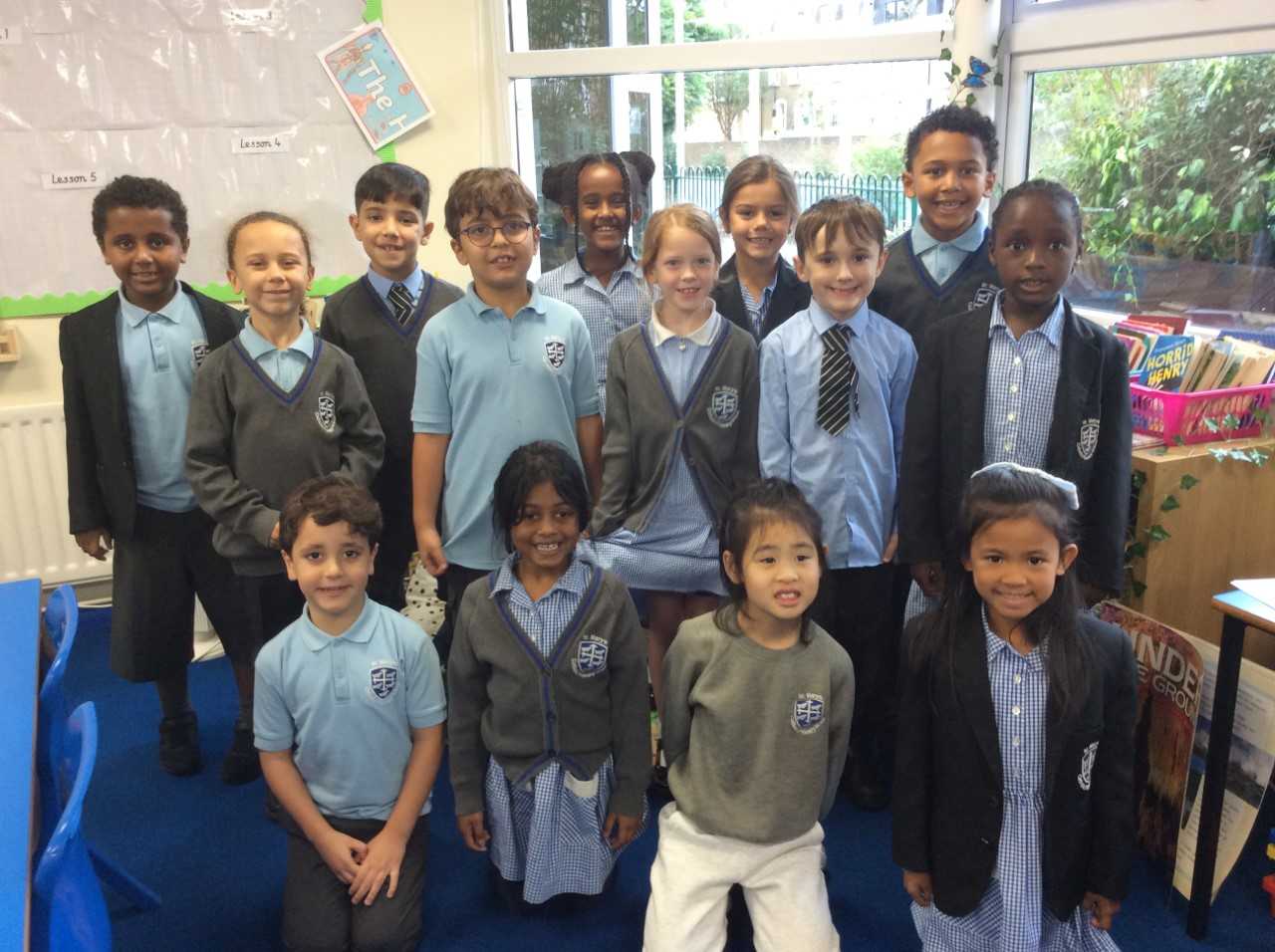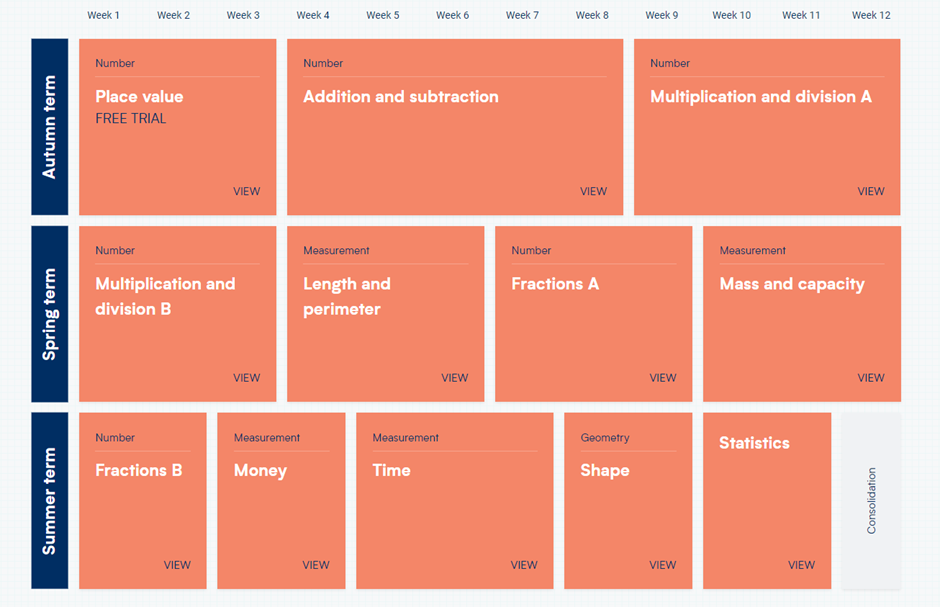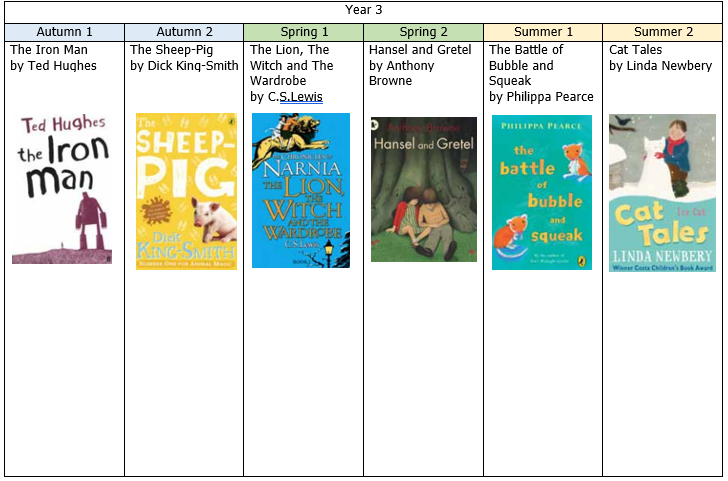Year 3
Welcome to Year 3!
In year 3, children enjoy a range of core and foundation subjects across the curriculum, alongside additional specialist teaching for Physical Education, music, Spanish, tennis, dance, drama and drumming.

Weekly reminders:
Homework is set on a Monday and due in the following Monday.
The homework set each week is spellings, SPAG, Maths and times tables.
At least 20 minutes of reading should take place at home each day and continual times table practice.
P.E day: Tuesday and Fridays
Children will need to bring in their P.E kits on Tuesday and Friday mornings to change into at school.
Maths
Here is the sequence of learning for maths in Year 3:
Year 3 autumn term
- Place value
- Addition and subtraction
- Multiplication and Division
Year 3 spring term
- Multiplication and division
- Length and perimeter
- Fractions
- Mass, capacity
Year 3 summer term
- Fractions
- Money
- Time
- Shape
- Statistics

Writing
Below are the Year 3 writing expectations:
Children will be taught to develop their understanding by:
- extending the range of sentences with more than one clause by using a wider range of conjunctions, including: when, if, because, although
- using the present perfect form of verbs in contrast to the past tense
- choosing nouns or pronouns appropriately for clarity and cohesion and to avoid repetition
- using conjunctions, adverbs and prepositions to express time and cause
- using fronted adverbials
- indicate grammatical and other features by:
- using commas after fronted adverbials
- indicating possession by using the possessive apostrophe with plural nouns
- using and punctuating direct speech
Reading- word reading
- apply their growing knowledge of root words, prefixes and suffixes (etymology and morphology) , both to read aloud and to understand the meaning of new words they meet
- read further exception words, noting the unusual correspondences between spelling and sound, and where these occur in the word
Reading - comprehension
- develop positive attitudes to reading, and an understanding of what they read, by:
- listening to and discussing a wide range of fiction, poetry, plays, non-fiction and reference books or textbooks
- reading books that are structured in different ways and reading for a range of purposes
- using dictionaries to check the meaning of words that they have read
- increasing their familiarity with a wide range of books, including fairy stories, myths and legends, and retelling some of these orally
- identifying themes and conventions in a wide range of books
- preparing poems and play scripts to read aloud and to perform, showing understanding through intonation, tone, volume and action
- discussing words and phrases that capture the reader’s interest and imagination
- recognising some different forms of poetry [for example, free verse, narrative poetry]
- understand what they read, in books they can read independently, by:
- checking that the text makes sense to them, discussing their understanding, and explaining the meaning of words in context
- asking questions to improve their understanding of a text
- drawing inferences such as inferring characters’ feelings, thoughts and motives from their actions, and justifying inferences with evidence
- predicting what might happen from details stated and implied
- identifying main ideas drawn from more than 1 paragraph and summarising these
- identifying how language, structure, and presentation contribute to meaning
- retrieve and record information from non-fiction
- participate in discussion about both books that are read to them and those they can read for themselves, taking turns and listening to what others say
Year 3 Shared Reading books

